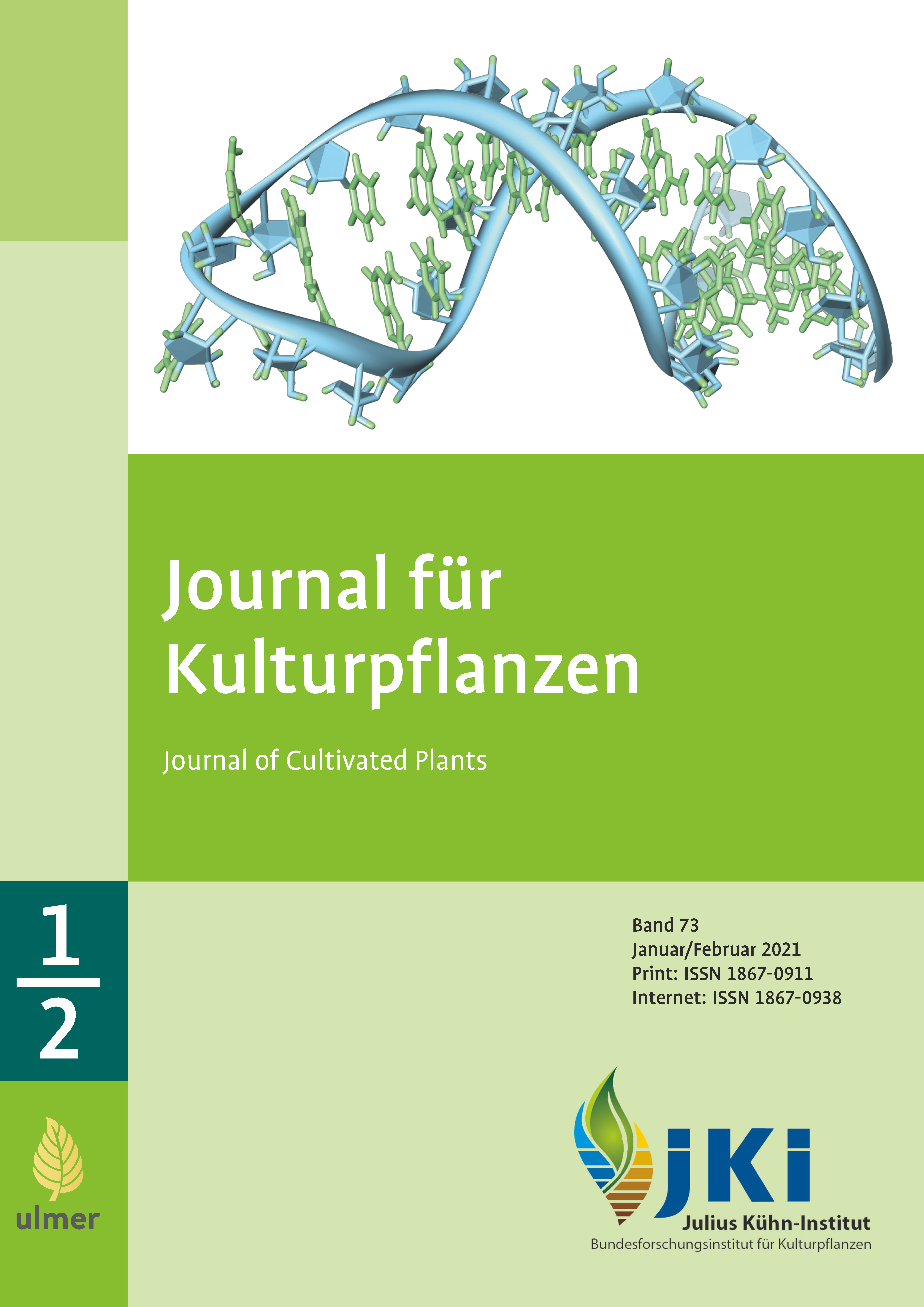Deposition of an active substance on upper and lower leaf surface and implications on the efficacy in different ornamental plants depending on nozzle type and addition of a wetting-agent
DOI:
https://doi.org/10.5073/JfK.2021.01-02.01Keywords:
Application Technology, active-substance deposition, efficacy, Karate Zeon, wetting agent, Break-Thru,Abstract
The distribution of a plant protection product in the plant stand depends to a large extent on the availability and use of a suitable application technique. Only a good distribution guarantees the safe contact of the target organisms with the active ingredient. This applies in particular to pests which are on the underside of the leaves. The effect of the nozzle type as well as the use of a wetting agent on the active ingredient attachment to the upper and lower leaf surface and the resulting effectiveness are the subject of these investigations.
For the determination of the active ingredient attachment an artificial leaf was used, in which the glass fiber filters attached to it could be analyzed separately as the upper and lower side of the leaf. The use of a hollow cone nozzle, as compared to the flat spray nozzle, increased the attachment on the upper side of the artificial leaves in narrow-leaved Brachyscome multifida. The double flat fan nozzle did not differ significantly to the other nozzle types. In broad-leaved Pelargonium-zonale-hybrids and Fuchsia hybrids no differences were found between nozzle types. The active ingredient attachment on the underside of the artificial leaves on the Fuchsia hybrid and the efficacy on Trialeurodes vaporariorum was low regardless of the nozzle type.
Downloads
Published
Issue
Section
License
The content of the journal is licensed under the Creative Commons Attribution 4.0 License. Any user is free to share and adapt (remix, transform, build upon) the content as long as the original publication is attributed (authors, title, year, journal, issue, pages).
The copyright of the published work remains with the authors. The authors grant the Journal of Cultivated Plants, the Julius Kühn-Institut and the OpenAgrar repository the non-exclusive right to distribute and exploit the work.







